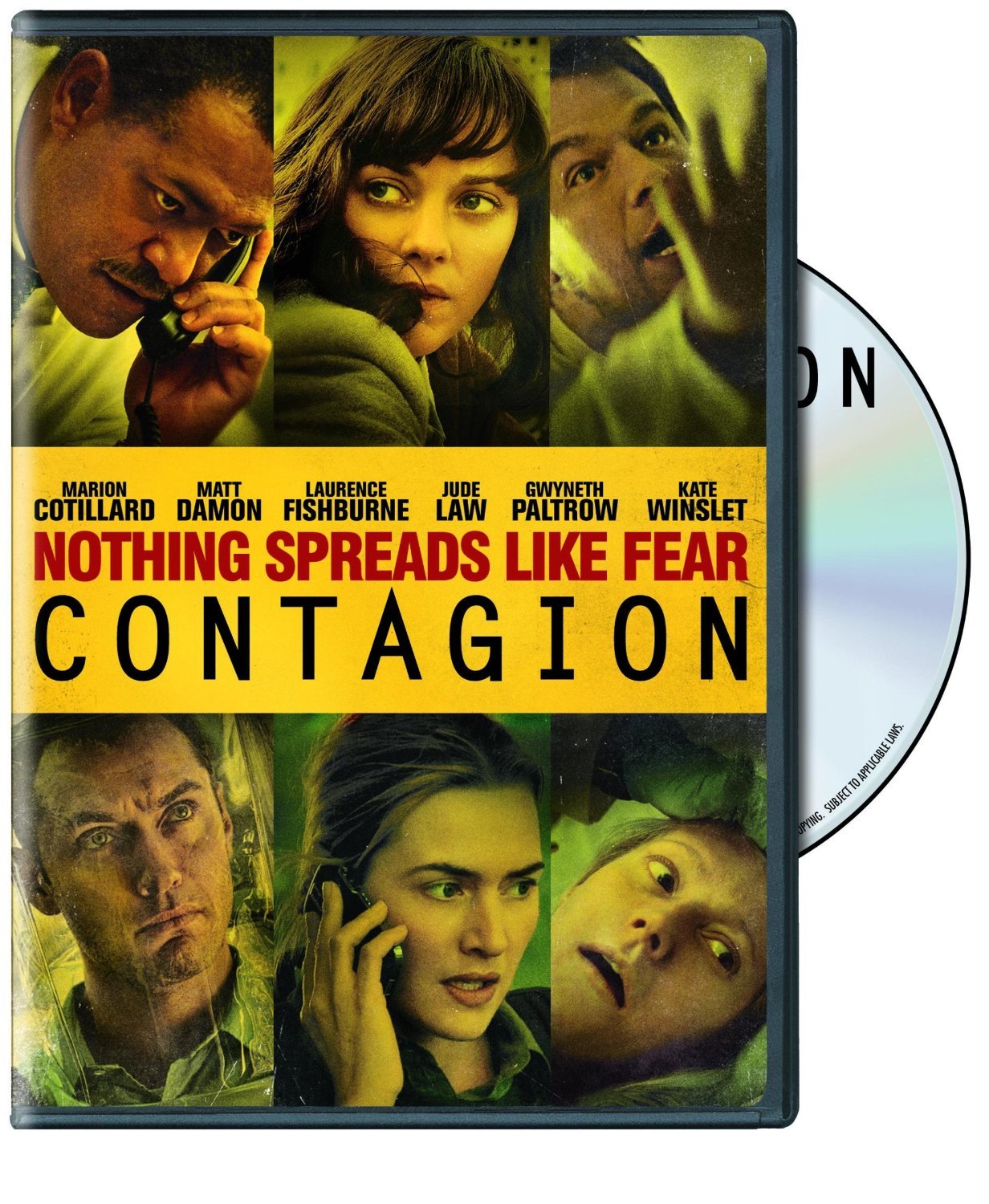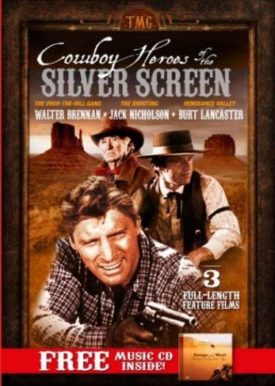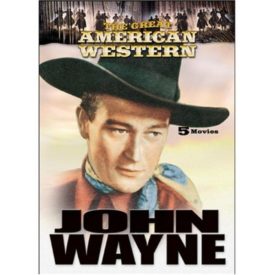Contagion (DVD)
Other Marketplace Price: $17.99Sale Price:$9.49
- Ships Same Day.
- FREE Shipping (U.S. Delivery).
- International Shipping (See Shipping Chart Below).
2 in stock
| Shipping US FREE SHIPPING |
FREE Shipping! |
|---|---|
| Shipping US Expedited 2-3 Day |
US Shipping: $14.99 Unlimited Items. |
| Shipping Canada |
Canada Shipping: Flat $34.99. |
| Shipping Int'l Standard | International Shipping: $64.99 Worldwide. |
| Shipping Local Pick Up |
FREE Local Pick Up in Store |
| Condition | New |
|---|---|
| Publisher | Warner Home Video |
| Rating MPA | Pg-13 |
| Recording Length | 106 Minutes |
| Recording Studio | Warner Home Video |
| Format | DVD |
| Age Group | Adult |
| Amazon ASIN | B006LAO92I |
| UPC / EAN | 883929191758 |
| Size | 7.5" x 5.25" x .50" |
| Year | 2011 |
| ReleaseDate | 2011-09-09 |
| RuntimeMins | 106 |
| RuntimeStr | 1h 46min |
| Awards | Awards, 2 wins & 14 nominations |
| Directors | Steven Soderbergh |
| Writers | Scott Z. Burns |
| Stars | Matt Damon, Kate Winslet, Jude Law |
| Produced by | Zakaria Alaoui, Chen On Chu, Gregory Jacobs, Jonathan King, Michael Polaire, Michael Shamberg, Stacey Sher, Jeff Skoll, Ricky Strauss |
| Music by | Cliff Martinez |
| Cinematography by | Steven Soderbergh |
| Film Editing by | Stephen Mirrione |
| Casting By | Carmen Cuba |
| Production Design by | Howard Cummings |
| Art Direction by | Abdellah Baadil, Simon Dobbin, David Lazan, Bret August Tanzer, Lydia Zoe |
| Set Decoration by | Cindy Carr |
| Costume Design by | Louise Frogley |
| Makeup Department | Fríða Aradóttir, Kate Biscoe, Andrea C. Brotherton, Fannie Chan, Nathaniel De Lineadeus, Stephan Dupuis, Kay Georgiou, Alma Izquierdo, Rosalind Jones-Crosby, Laurel Kelly, Aimee Lippert, Dominic Mango, Holland Markis, Sarah Mays, Maria O Reilly, Suzi Ostos, Mimi Palazon, Andrea Pino, Thomas Terhaar, Samuel Wong, Daria V. Wright, Aurora Bergere, Kimberly L. Boundas, Melinda Dunn, Latrice Edwards, Vivian Guzman, Lisa Jelic, Chris Lyons, Nancie Marsalis, LunYé Marsh, Cheryl Ann Nick, Jennifer Tremont, Vicki Vacca |
| Production Management | Julie M. Anderson, David Brown, Connie Cheung, David Kirchner, Francine Lusser, Alessandra Moresco, Juliette Perréard, Michael Polaire, Christa Vausbinder, Johnny Wang, Bill Wu, B. Ted Deiker, Afnahn Khan, Gérard Monier, Mark Scoon |
| Second Unit Director or Assistant Director | Trey Batchelor, Brendon Breese, Wai Kei Cheng, Lanbo Cheuk, Joey Coughlin, Yann Mari Faget, Jason Halley, Ahmed Hatimi, Gregory Jacobs, Eric Richard Lasko, Nikki Lau, Cheuk Pan Lee, Lemon Liu, Florian Nussbaumer, Samar Pollitt, Sunni-Ali Powell, Andy Spellman, Jody Spilkoman, Mohammed Hamza Regragui |
| Art Department | Joseph J. Allen, Andy Au, Nina Bachmann, Dean Backer, Nate Belove, Mark Boucher, David Brennan, Robert J. Carlyle, Keith Cheung, Robbie Conal, David Cortez, Chewie K. Darsow, Ricky Dear, Gary Dempsey, Tanja Deshida, Simon Dobbin, Brad Einhorn, Rod England, Ricky Eyres, William A. Fobert, Michael D. Gianneschi, Stephanie Gilliam, Lee Gordon, Halsted Craig Hannah, Kristin Hanson, Chi Hang Ho, Peter Hudson, Bam Hughes, Bruce Hui, Chun-Wah Hui, Margaret Hungerford, Tula Jeng, Eric R. Johnson, John P. Kenny III, David W. Krummel, Franziska Kummer, Tani Kunitake, Jason Lam, Carolyn Lassek, Zoe Lee, Cat Leung, Tsz Fung Li, David Loya, Andrew Murdock, Brea Murphy, James Nichols, Jon Nicholson, Roderick Nunnally, Tyler Osman, Jeff Ozimek, Jami Primmer, Rachid Quiat, Shari Ratliff, Shane Reed, Matt Reese, Brent Regan, Jack Rogers, David Ronan, John H. Schulz, Aaron Shores, David Soukup, Bret August Tanzer, Karen Teneyck, David Tennenbaum, Scott Troha, Calvin Tsoi, Wai-Yin Tsoi, Merje Veski, James Bryant Wactor, Kloud Wan, Spence Warren, Michael C. Woodcock, Carrie Yiu, Susan Alegria, Paul V. Allen Sr., Colin Bach, Nicole Balzarini, Bil Barnes, Anthony Barracca, Patrick Beals, Bonnie Briggs, Adrian Cortes, Zach Doherty, Phillip Ellman, Anthony Joseph Fatigato, Carol Francoso, Gary Happ, Michael A. Heath, Kelly Hogan, Holli Hopkins-McGinley, Bam Hughes, Steve Hull, Abdenabi Izlaguen, Ryan Patrick Kelly, Mark Kessler, Andrew Lewis, Konrad Lewis, Miles Logan, Nathan Mack, Krystal MacKnight, Quentin Matthys, Jono Moles, Dan Molnar, Mike Monckton, Katy Moore-Kozachik, Chuck O Malley, Chad Owens, Walter J. Piers, Taraja Ramsess, Katrina Rice, Greg Sanger, Sabrina Siebert, Larry Szymanowski, James Bryant Wactor, Jody Weisenfeld |
| Sound Department | David Betancourt, Larry Blake, Matt Coby, Scott Curtis, Dawn Fintor, Lisa Gillespie, Matt Gruber, Javier M. Hernández, Angus Mak, Matthias Neumann, John Pospisil, Michael Primmer, Alicia Stevenson, Billy Theriot, Dennis Towns, Mark Weingarten, David A. Whittaker, Byron Wilson, Oscar Cordova, Karl Dondlinger, Christopher Joseph Harris, Darin Heinis, Tommy Lindquist, Christopher Mills, Adam Mohundro, Neil Riha, Brian Seagrave, Zach Wrobel, Nourdine Zaoui |
| Special Effects by | Michael Ahasay, Gunter Anderson, Ron Bolanowski, Darrell Burgess, Blake E. Matthys, John D. Milinac, Dieter Sturm, Heath Winn, Kuong Tat Wong, Ryan Evans, Jeffrey Hurt, John J. Slove Jr., Yvonne Sturm |
| Visual Effects by | Daniel Lorenzo Alvarez, Aaron Brown, Shauna Bryan, Chad E. Collier, Karl Coyner, Michael Sean Foley, Alex Gitler, Randy Goux, Jayse Hansen, Peter Hart, Heather Elisa Hill, Hiroki Iijima, Nat Jencks, Jinnie Pak, Chi Pham, David Rey, Casey Rolseth, David Santiago, Tiago Santos, Aaron Schultz, Rasha Shalaby, Thomas J. Smith, Michele C. Vallillo, Jason Wardle, Xye, Michael S. Harbour, Raechel Kasprzak, James P. Noon, Gustavo A. Pablik, Jason Pomerantz, Chris B. Schnitzer, Scott Steyns, James William Visconti III |
| Stunts | Janeshia Adams-Ginyard, Dan Bell, Robin Lynn Bonaccorsi, Rocky Capella, Paul Crawford, Tobiasz Daszkiewicz, Lisa Dempsey, Alessandro Di Martini, Shawnah Donley, Thomas M. Ficke, James Fierro, Mike Guerra, Mark Harper, Sara Holden, Larry Lam, Rick LeFevour, Tom Lowell, Daniel Maldonado, James R. Mammoser, Mike Martinez, Danton Mew, Natalie M. Meyer, Alexandre Ottoveggio, Michael Owen, Brian Peters, Rex Reddick, R.A. Rondell, Mike Sasse, Courtney Schwartz, Greg Sloan, Monika Sloan, James D. Weston II, Rich Wilkie, Robert G. Beck, Liisa Cohen, Aaron Crippen, Elizabeth Davidovich, Shawnah Donley, Patrick Dunham, Todd Gillenardo, Dante Ha, Tim Halpin, Michael Hilow, Mary Karcz, Luke Kearney, Jason Kehler, Jeff Kehoe, Kevin Larson, Matthew LeFevour, Nina Leone, Will Leong, Christian Litke, Tim Martin, Tim Meredith, Jeff Mosley, Marty Murray, Chris Nolte, Linda Perlin, Scott Philyaw, Jeff Shannon, Lonnie R. Smith Jr., Kevin Sorensen, Todd Rogers Terry, John Turk, Tony Vella, Crescent Wood, Ryan Young |
| Camera and Electrical Department | James W. Apted, Claudette Barius, Abderrahim Bissar, Kevin Boyd, Shaun Braswell, Henry Cantor, Thomas S. Ciciura, Dan Dobson, Greg Fausak, Chris Glomp, Daniel A. Guerrero, Tim Guffin, David Henri, Jason Hooper, Matt Johnson, Louis Jong, Ivan Kadlec, April Kelley, Russell Kennedy, Billy Ko, James Kumarelas, Chun-Shing Lam, Chun-Wan Lam, Didier Lebel, Wa-wai Luk, David Louie Lukasik, Duane Charles Manwiller, Steven Meizler, John Joseph Minardi, Wilson Mylander, Patrick B. O Brien, Felix Rivera, John S. Robertson, Spencer M. Rohan, Jason Storandt, Paul Toomey, Jerry Tran, Eric Walther, Peter Walts, Hunter Whalen, Bradley Everett Wilson, Sebastián Almeida, Sam Andrzejewski, Noah Banks, Michael Best, Michael Ryan Burns, Ian Chriss, Jim Crowther, Jaime Dawkins, Ronald Dragosh, Kenneth D. Emanuele, Mark Funnell, Bob Gomez, Benjamin Kilmer, Toby Lawrence, Duane Charles Manwiller, Corneel Mertens, David Mong, David Shakibanasab, Benny Smyth, Scott Thiele, Porter Versfelt III, Marc Wall, Mark N. Woods |
| Casting Department | Madalena Chan, Emma Fletcher, Katrina Wandel George, Nina Henninger, Aaron Ho, Rich King, Bill Marinella, Becca McCracken, Amy Newbold, Doug Ritzenthaler, Claire Simon, Erin Stewart Tiedje, Cody Bayne, Shelby Cherniet, Brian Entler, Julianna LaRosa, Rose Locke, Jessica Gisin Needham, Antonin Schopfer, Amanda Tabak, Michael Warwick |
| Costume and Wardrobe Department | Jeanie Baker, Nancy Cavallaro, Stella Cottini, Tom Cummins, Jennifer Jobst, Laura Kaminski, Brittany McLeod, Valerie T. O Brien, Dorothy Pa, Iliana Sanchez, Richard Schoen, Amanda Vinopal, Jane Blank, Julia Gombert, Rachael Ohman, Tracy Reuter, Dana Schondelmeyer, Senna Shanti, Cassiopeia Smith |
| Editorial Department | Corey Bayes, Philip Beckner, Jade E. Chatham, John Daro, Jeremy Edwards, Nat Jencks, Paul Lavoie, Tamara McDonough, John Nicolard, David Rosenthal, Bill Schultz, Spike Schwab, Wai Wing Tong, Brian Ufberg, Des Carey, Amy McGrath, Clare McKee, Dan Muscarella, Tim Weyers, Lee Wimer |
| Location Management | Mohamed Benhmamane, Adam Boor, David Broder, Stephen Dirkes, Dow Griffith, Yves Herren, Angel Ho, Martin L. Hudson, Saisie M. Jang, Dan Kemp, Ken Lavet, Daniel Lee, Jeannie Mak, Mark Mamalakis, Guy Morrison, Natasha Parker, Matthew Riutta, Jonathan Shedd, Matthew Tai, Miguel Tapia, Kenny Wong, Chi Wai Yan, Khalid Ameskane, James Fingers Buxton, Darrick Chan, Faical Hajji, Charlie Hayes, Nicholas Jamison, Lynsey Tamsen Jones, Eric McCoy, Ric Perada, Ben Piltz, Marcus Q Quandt, Debra A. Wilson |
| Music Department | Helen Z. Altenbach, David Low, Randy Miller, Adam Olmsted, Mac Quayle, Ryan Robinson, Dennis S. Sands, James Thatcher, Gregory Tripi, Rich Wheeler, Sam Zeines, Carter Armstrong, Tom Hardisty, Frank Macchia, Bart Samolis, Martin St. Pierre |
| Script and Continuity Department | Annie Welles |
| Transportation Department | Ali Bakkioui, Jeff Bova, Jimmy Carruthers, Jeannie Cummings, Chris Deguzman, Clark Dolan, Redouane Fihi, Michael Freeman, Shane Greedy, David Ho, Thaddeus E. Larkowski, Dannie Lenz, Aaron Ngo, Wai Kit Pang, Stephen Roland, George A. Sack, Carl Scott, Kelly Yon, Mounir Badia, Guy Bostock, Bundy Chanock, Chris George, Kirk Huston, Dan J. Latham II, Steve Lewis, John Lux Jr., Tim May, Jon Smith, Chase Spitzer, Bill Walker, Robert Wallace |
| Additional Crew | Terrence Abbott, Abde Sallam Ait Abdellah, Wendy Altman-Cohen, H. Leah Amir, Mardie Anderson, Erik Andreasen, Mark Assad, Donnell Barnes, Taoufiq Belemqadem, Stephanie Beman, Lark Bernini, David Birch, Ira Blumen, Mike Bondi, Larry Brilliant, Kevin Ray Brown, Joe Brunory, Nicholas Carranza, Elizabeth Chambers, David Champion, Cassandra Chan, Jenny Chan, Kwok-Kit Chan, Hoi Wai Chang, Freddi Cheung, Chelsea Christer, Luke Crawford, Fabiano D Amato, Richard Daldry, Kate Rees Davies, Ted M. Davila, Gabe de Kelaita, Elena de Leonardis, Jonelle Castillo Deal, Suzanne Debrunner, Martin Delrio, Matt Demier, Drew Durepos, Robb Earnest, Heidi Erl, Man Fong, Coco Francini, Michael Franck, Pablo Gambetta, Laurie Garrett, Kahli Gaskin, Billy Goldberg, Heather Gothie, Natasha K. Griffith, Erin Grindler, Jennifer Hackney, Cheryl Harris, Gregory C. Haynes, Susan Hegarty, Brandon Heidt, Jason Hinkel, Aaron Ho, Elizabeth Hurley, Kristen Irving-Jordan, Kevin Keating, Claire Kenny, Lexi Kirsch, Duncan Lamberson, David Lanes, Chor Chun Lau, Kok Fai Lee, Ross Lee, Ina Lereine, Feyon Li, Ian Lipkin, Stephanie Logan, Cathie Ma, Kathryn Madden, Joseph Malloch, Hiromi Marder, Olivia McCallum, Darin McCormick-Millett, Shelby McDaniel, Tracey McNamara, Gian Mitchell, Elaine Mongeon, Maureen Mottram, Lisa Nichols, Rick Nieves, Colin J. O Hara, Robert O Quinn, Brent Ogburn, Matt Ott, Lindsey Passen, Ina Petersen, Liz Probst, RoseMary Prodonovich, Rachel Redding, Mary Frances Reidy, Mayda Renizzi-Holt, Deborah Ricketts, Ken Ryan, Michael J. Ryan, Connie Schmaljohn, Ericka N. Shane, Matthew Shreder, Mark Smolinski, Carolina Solorzano, Ryan Steinhouse, Spooky Stevens, Widad Taha, Cynthia D. Tappy, Alyssa Telford, Isobel Thomas, Sophie Treacher, Daniela Tully, Michael P. Twombly, Maurice Vy, Chelsea Wehner, Don Weiss, Jessie Sasser White, Michelle Wilson, Nathan Wolfe, George Wong, Bing Yin, Kenneth Yoder, Sydney Yuman, Saad Ajedigue, Darby Allen, Mel Barries, Michael Bean, Robert G. Beck, Bouchra Bentayeb, Mustapha Bentayeb, Mark Blecha, Genona Blue, Brittany McCoy Boardman, William Bowling, Elizabeth Kate Branem, Alrik Bursell, Joe Caplan, Alan Chu, Nikko DeLuna, Erin Douglass, Desiree Dumas, Justin Dybowski, Adelita Espinoza, Karen Franco, Larry Gilbert, Camille Goldberg, Susannah Greason, Erin Grindler, Marcy Guiragossian, Angela Higley, Apryl Hill, Stephanie Jeter, Ashley Johnson, Brendan Jones, Holly Kang, Melissa Kaye, Amir R. Khan, Karen Kindig, Lauren Knox, Christina Kouyoumdzoglou, Paula Lima, Juliet Lopez, Christian Munoz-Donoso, Jason Neisewander, Jim Nieciecki, Nicole Oesterle, Daniel A. Parker, Andrew Parsons, Paul Rathburn, Deacon Reed, Mohammed Hamza Regragui, Angelo Renardo, Jason Rickwood, Terry Rigarlsford, Rafael Sanz, Amanda See, Anthony Sergio, Michael C. Smith, Victor H. Soto, L. La Mar Stewart, Jackie Swanson, Victoria Swanson, Justin Thaler, Jennifer Tunberg, David Weber |
| Thanks | Cynthia Minnick, Vicente C. Ogilvie |
| Genres | Drama, Thriller |
| Companies | Warner Bros., Participant, Imagenation Abu Dhabi FZ |
| Countries | United Arab Emirates, USA |
| Languages | English, Mandarin, Cantonese |
| ContentRating | PG-13 |
| ImDbRating | 6.8 |
| ImDb Rating Votes | 303109 |
| Metacritic Rating | 70 |
| Short Description |
Contagion is a 2011 American medical thriller film directed by Steven Soderbergh. Its ensemble cast includes Matt Damon, Laurence Fishburne, Elliott Gould, Jude Law, Gwyneth Paltrow, Kate Winslet, Bryan Cranston, Jennifer Ehle, Sanaa Lathan, and Marion Cotillard. The plot concerns the spread of a highly contagious virus transmitted by respiratory droplets and fomites, attempts by medical researchers and public health officials to identify and contain the disease, the loss of social order as the virus turns into a worldwide pandemic, and the introduction of a vaccine to halt its spread. To follow several interacting plot lines, the film makes use of the multi-narrative hyperlink cinema style, popularized in several of Soderbergh s films. Following their collaboration on The Informant! (2009), Soderbergh and screenwriter Scott Z. Burns discussed a film depicting the rapid spread of a virus. Burns consulted with representatives of the World Health Organization as well as medical experts such as W. Ian Lipkin and Larry Brilliant. Principal photography started in Hong Kong in September 2010, and continued in Chicago, Atlanta, London, Dublin, Geneva, and San Francisco Bay Area until February 2011. Contagion premiered at the 68th Venice International Film Festival in Venice, Italy on September 3, 2011, and was theatrically released on September 9, 2011. Commercially, the film made $136.5 million against its $60 million production budget. Critics praised it for its narrative and the performances, as did scientists for its accuracy. The film received renewed popularity in 2020 due to the emergence of the COVID-19 pandemic. |
| Box Office Budget | $60,000,000 (estimated) |
| Box Office Opening Weekend USA | $22,403,596 |
| Box Office Gross USA | $75,658,097 |
| Box Office Cumulative Worldwide Gross | $136,515,867 |
| Keywords | Virus,infection,contagion,epidemic,vaccine |







 New
New 

